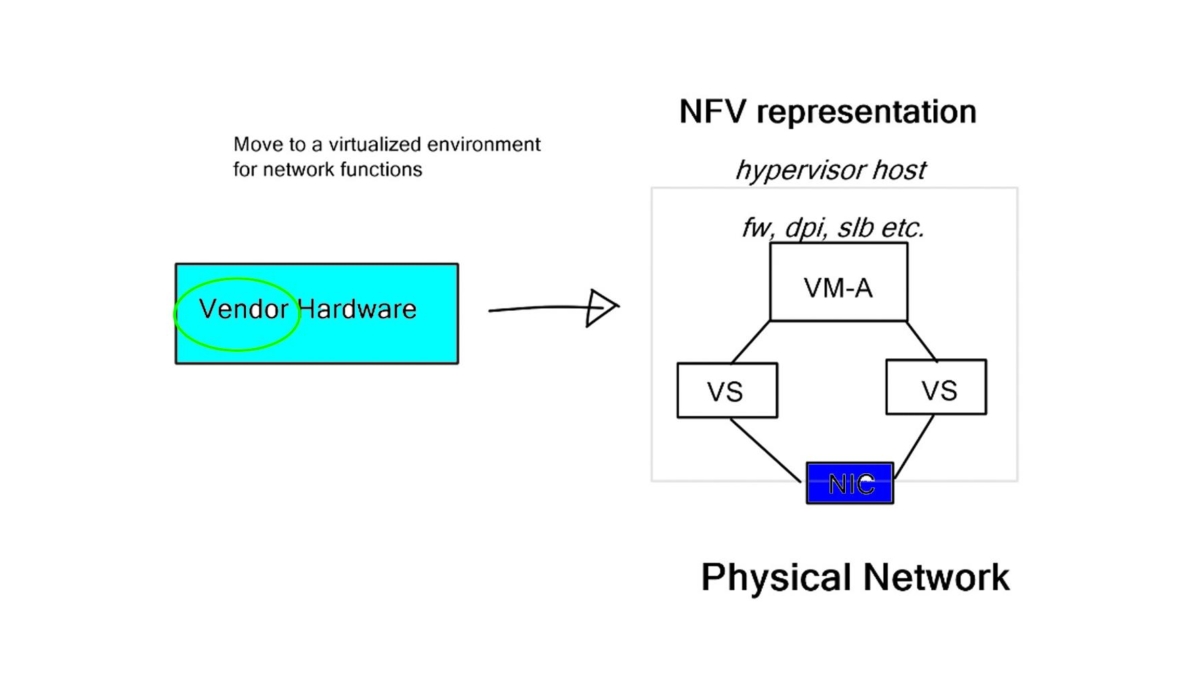NFV Use Cases
Network Function Virtualization (NFV) has emerged as a transformative technology in networking. By decoupling network functions from dedicated hardware and implementing them in software, NFV offers remarkable flexibility, scalability, and cost-efficiency. This blog post will explore the diverse range of NFV use cases and how this technology is revolutionizing various industries.
NFV allows the virtualization of various network appliances such as firewalls, load balancers, and routers. This consolidation of functions into software-based instances simplifies network management, reduces hardware complexity, and enables efficient resource allocation.
NFV in Telecommunications: With the rapid expansion of mobile networks and the increasing demand for bandwidth, telecommunications companies are embracing NFV to enhance their infrastructure. By virtualizing network functions such as firewalls, load balancers, and session border controllers, telecom operators can achieve cost savings, simplified management, and faster service deployment. NFV also enables dynamic scaling of resources, ensuring optimal network performance even during peak usage periods.
NFV in Cloud Computing: Cloud service providers leverage NFV to deliver scalable and on-demand network services to their customers. By virtualizing functions like virtual routing, switching, and firewalls, cloud providers can offer flexible and customizable network configurations to meet diverse client requirements. NFV also enables rapid service chaining, allowing for the seamless integration of different network functions to create complex service offerings.
NFV in the Internet of Things (IoT): The proliferation of IoT devices brings forth new challenges in terms of managing and securing the massive amounts of data generated. NFV plays a crucial role in IoT deployments by providing virtualized security services that can be dynamically allocated based on the changing demands of IoT networks. Additionally, NFV enables efficient data processing and analysis at the edge, reducing latency and improving overall system performance.
NFV in the Healthcare Industry: The healthcare sector is embracing NFV to enhance patient care, optimize resource utilization, and improve operational efficiency. By virtualizing functions like patient monitoring systems, electronic health records, and secure communications, healthcare providers can streamline workflows, reduce costs, and ensure data privacy. NFV also enables telemedicine services, facilitating remote consultations and enhancing access to healthcare in underserved areas.
The use cases of NFV span across various industries, showcasing its versatility and transformative potential. From telecommunications to cloud computing, IoT, and healthcare, NFV's ability to virtualize network functions offers numerous benefits such as cost savings, flexibility, and scalability. As technology continues to evolve, NFV will undoubtedly play a pivotal role in shaping the future of networking, enabling innovative solutions to meet the ever-growing demands of the digital era.
Matt Conran
NFV Use Case
**Introduction to Network Function Virtualization (NFV)**
In the ever-evolving landscape of technology, Network Function Virtualization (NFV) has emerged as a groundbreaking innovation. This transformative approach to network architecture promises to revolutionize how service providers create and deliver network services. By decoupling network functions from proprietary hardware appliances, NFV offers unprecedented flexibility and scalability. But what exactly is NFV, and why does it hold such promise for the future of networking?
**The Architecture Behind NFV**
At its core, NFV is about transforming network functions into software applications that can run on standard servers. This shift allows for the virtualization of functions such as firewalls, load balancers, and routers, which were traditionally tied to specific hardware. The architecture relies on a combination of virtual machines, hypervisors, and cloud computing to create a dynamic and efficient network environment. By using commercial off-the-shelf hardware, service providers can reduce costs and increase agility in deploying new services.
**Benefits of Adopting NFV**
The adoption of NFV brings a myriad of benefits to both service providers and end-users. For providers, it means a significant reduction in capital and operational expenditures. The flexibility to deploy network functions as software applications enables faster service innovation and deployment. For end-users, NFV translates to improved service delivery, with enhanced reliability and performance. Moreover, the scalability of NFV allows for better management of network resources, adapting quickly to varying demands.
**Challenges in Implementing NFV**
Despite its advantages, implementing NFV is not without challenges. One of the primary concerns is the integration of NFV with existing network infrastructures. As providers transition from hardware-based solutions to virtualized environments, they must ensure compatibility and interoperability. Additionally, security remains a critical issue, as virtualization introduces new vulnerabilities. Addressing these challenges requires a robust strategy and collaboration between industry players to establish standards and best practices.
**The Future of NFV**
Looking ahead, NFV is poised to play a crucial role in the advancement of 5G networks and the Internet of Things (IoT). As the demand for high-speed, low-latency services grows, NFV’s ability to deliver flexible, scalable solutions will be invaluable. The technology’s potential to support innovative services, such as network slicing and edge computing, positions it as a key driver of future network evolution. As NFV matures, we can expect to see even greater integration with emerging technologies, further reshaping the networking landscape.
Network Function Virtualisation (NFV)
At its core, NFV decouples network functions such as firewalls, load balancers, and routers from proprietary hardware appliances, allowing them to run as software on a range of hardware. This shift not only reduces the reliance on specialized hardware but also enhances the flexibility and scalability of networks. By leveraging standard IT virtualization technology, NFV enables network operators to deploy new services with greater speed and efficiency.
It could be argued that Network Function Virtualization (NFV) builds on some of the basic and now salient concepts of Software Defined Networking (SDN). Separation of control and data planes, logical centralization, controllers, network virtualization (logical overlays), application awareness, and application intent control are all trending toward running on commodity (Commercial Off-The-Shelf (COTS)) hardware platforms.
With NFV, these concepts are expanded with new methods supporting service element interconnection, such as Service Function Chaining (SFC), and new management techniques for coping with its dynamic, elastic capabilities.
**Network Service and Service Function**
A: – The concept of a network service refers to any computational service that possesses a network component. Some functions can discriminate between individual network flows or manipulate them in other ways. According to the IETF SFC Architecture document, an operator’s offering is delivered using one or more service functions.
B: – The IETF document defines a service function as a function responsible for treating received packets in a specific manner: “A function responsible for treating received packets in a particular manner.” A network element that provides a service function, whether virtual or traditional, highly integrated, may also offer multiple service functions, so we would refer to it as a “composite.”
NFV is not complicated
C: – Network functions virtualization (NFV) is not a complicated concept. The term refers to deploying hardware functions as software instead of hardware. Most commonly, virtual machines (VMs) serve as routers, firewalls, load balancers, intrusion detection and prevention systems (IDS/IPS), virtual private networks (VPNs), application firewalls, and other functions.
D: – A monolithic piece of hardware may cost tens of thousands of dollars and may have thousands of lines of code, and with NFV, it can be broken down into N pieces of software- namely, virtual appliances. A smaller device makes it easier to manage from the perspective of a single device.
A Key Point: Network Virtualization:
In network virtualization, endpoints are grouped logically on a network. As a result of this abstraction, VMs (and other assets) appear, behave, and can be managed as if they were all located on the same physical segment of the network. Even though it is an old technology, it is essential in virtual environments, where assets are created and moved without much regard for location. Automation and management tools have been designed specifically for scalable and elastic virtualized data centers and clouds.
NFV Use Cases
1. Telecommunications:
NFV has revolutionized the telecommunications sector by enabling the virtualization of crucial network functions. Service providers can now deploy virtualized network functions (VNFs) such as routers, firewalls, and load balancers, reducing the reliance on dedicated hardware. This allows for dynamic scaling, faster service deployment, and increased operational efficiency.
2. Cloud Computing:
NFV is playing a pivotal role in the evolution of cloud computing. By virtualizing network functions, NFV enables the creation of software-defined networking (SDN) architectures, which offer greater agility and flexibility in managing network resources. This allows cloud service providers to quickly adapt to changing demands, optimize resource allocation, and deliver services with enhanced performance and reliability.
3. Internet of Things (IoT):
The proliferation of IoT devices has created new challenges for network infrastructure. NFV has emerged as a solution to meet the dynamic demands of IoT deployments. By virtualizing network functions, NFV enables the efficient management and orchestration of network resources to support the massive scale and diverse requirements of IoT applications. This ensures seamless connectivity, efficient data processing, and improved overall performance.
4. Enterprise Networking:
NFV significantly benefits enterprise networking by simplifying network management and reducing costs. With NFV, enterprises can deploy virtualized network functions to replace traditional hardware appliances, reducing hardware and maintenance costs. This enables enterprises to rapidly deploy new services, scale their networks as per demand, and improve overall network performance and security.
5. Service Chaining:
NFV enables service chaining, which refers to the sequential routing of network traffic through a series of virtualized network functions. Service chaining allows for the creation of complex network service workflows, enabling the delivery of advanced services such as network security, traffic optimization, and deep packet inspection. NFV’s ability to dynamically chain and orchestrate virtualized network functions opens up new possibilities for service providers to deliver innovative and personalized services to their customers.
Network Functions Virtualization
Within NFV, Layer 4 through 7 services such as load balancing and firewalling are virtualized. Virtualization enables certain types of network appliances to be easily deployed wherever needed by converting them into virtual machines. Inefficiencies caused by virtualization led to the creation of NFV. Virtualization has been discussed primarily for its benefits but has also caused many problems.
Data center traffic was routed to and from network appliances at the network’s edge. There is a problem for fixed appliances since VMs are springing up and moving around. Virtualizing functions like firewalls can be easily “spun up” and placed where needed, just like virtual machines.
Virtual Networks with VXLAN:
Virtual machines supporting applications or services require physical switching and routing to connect to the data center or cloud and clients over a WAN link or the Internet. Data center networks must be secure in addition to load balancing and security. As traffic leaves the VM, it encounters a virtual switch (hypervisor), and then a physical switch at the top or end of the rack. The physical network cannot cope with the rapidly shifting state of virtual machines once traffic leaves the hypervisor.
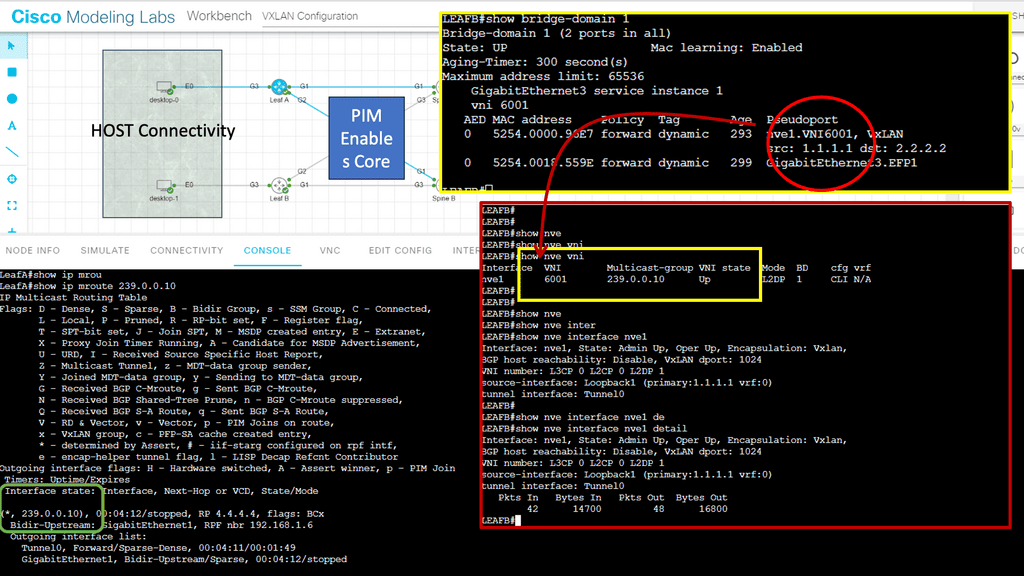
The issue can be circumvented by creating a logical network of VMs that spans the physical networks. Encapsulation is used in VXLAN, as in most other network virtualization forms. In contrast to simple VLANs, which can create only 4096 logical networks per physical network, VXLAN can create about 16 million logical networks per physical network. That scale is necessary for a large data center or cloud.
A shift from hardware-centric:
NFV, at its core, is the virtualization of network functions traditionally performed by dedicated hardware appliances. It enables the decoupling of network functions from specialized hardware, allowing them to be run as software on general-purpose servers. This shift from hardware-centric to software-centric network infrastructure brings immense flexibility, agility, and resource optimization advantages.
SDN and NFV
While Software Defined Networking (SDN) and Network Function Virtualization (NFV) are used in the same context, they satisfy separate functions in the network. NFV is used to program network functions, like network overlays, QoS, VPNs, etc., enabling a series of SDN NFV use cases. SDN is used to program the network flows. They have entirely different heritages. SDN was born in academic labs and found roots in the significant hyper-scale data center topologies of Google, Amazon, and Microsoft.
Its use case moves from the internal data center to the service provider and mobile networks. NFV, on the other hand, was pushed by service providers in 20012-2013, and work is driven out of the European Telecommunications Standard Institute (ETSI) working group. The ETSI has proposed an NFV reference architecture, several white papers, and technology leaflets.
You may find the following valuable post for pre-information:
NFV Use Cases
Over the past few years, it has become increasingly popular for companies operating within different industrial and commercial sectors to use network function virtualization (NFV) to solve multiple networking challenges. With the expansion of the Internet of Things (IoT) and advances in network communications technologies, along with the growing demand for ever more advanced services, network function virtualization is allowing enterprises to design, provide, and ease into much more advanced services and operations as well as reduce outgoings through cost savings.
Highlighting NFV
Network Function Virtualization (NFV) is a network architecture concept that uses software-defined networking (SDN) principles to virtualize entire classes of network node functions into building blocks that can be connected, composed, and reconfigured to create communication services. This virtualization approach to developing a programmable network layer is essential to realizing a Software Defined Network (SDN).
NFV enables the network administrator to rapidly create, deploy, and configure network services across data centers and remote locations, eliminating the need to deploy and maintain dedicated hardware for each service. In addition, by virtualizing the network functions, the network administrator can use a single instance of the service across the entire network, reducing complexity and management overhead.
NFV Benefits
The main benefit of NFV is that it simplifies network management, allowing the network administrator to create, deploy, and configure services as needed quickly. It also reduces costs associated with managing multiple instances of the same service. Additionally, NFV enables the network administrator to quickly deploy new services, allowing for rapid deployment and testing of new network services.
In addition to these benefits, NFV also provides flexibility and scalability. By leveraging virtualization, the network administrator can quickly scale the network up or down as needed without purchasing additional hardware. Additionally, NFV allows for more efficient use of resources, eliminating the need to buy dedicated hardware for each service.
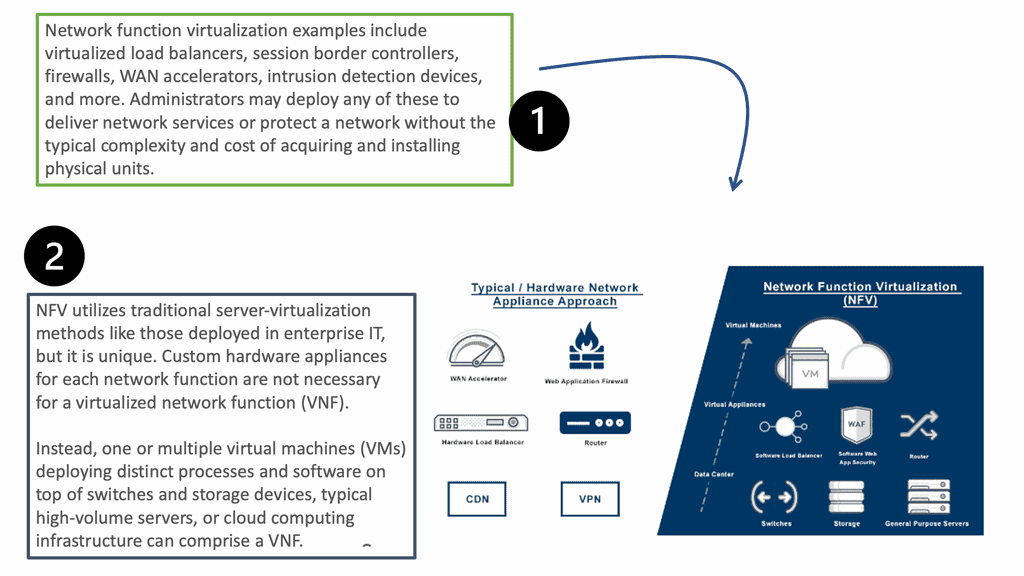
NFV Advanced
Network function virtualization (NFV) denotes a significant transformation for telecommunications/service provider networks, pushed by reducing cost, increasing flexibility, and providing personalized services. NFV leverages cloud computing principles to change how NFs such as gateways and middleboxes are offered. Unlike today’s tight coupling between the NF software and dedicated hardware, the loosely coupled software and hardware in NFV can relieve the upgrade cost and increase innovation flexibility.
**SDN NFV Use Cases: ASIC and Intel x86 Processor**
To understand network function virtualization, consider the inside of proprietary network devices and standard servers. The inside of a network device looks similar to that of a standard server. They have several components, including Flash, PCI bus, RAM, etc. Apart from the number of physical ports, the architecture is very similar. The ASIC (application-specific integrated circuit) is not as important as vendors would like you to believe.
When buying a networking device, you are not paying for the hardware—the hardware is cheap—but for the software and maintenance costs. Hardware is a minor component of the total price. Why can’t you run network services on Intel x86? Why is there a need to run these services on vendor-proprietary software? x86 general-purpose OSs can perform just as well as some routers with dedicated silicon.
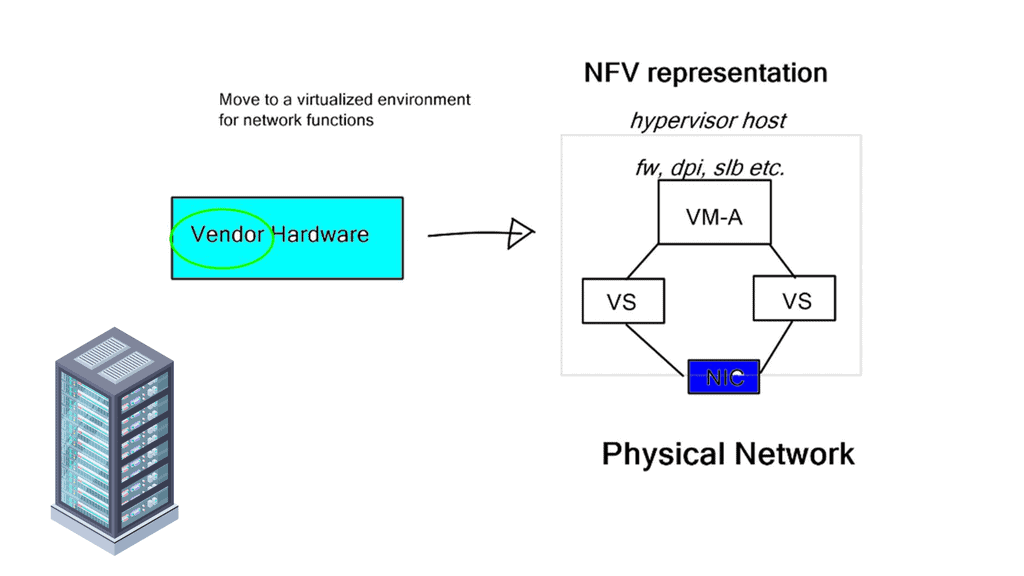
Network Function Virtualization Architecture
The concept of NFV is simple: Let’s deploy network services in VM format on generic, non-proprietary hardware. NFV increases network agility by deploying services in seconds, not weeks. The time-to-deployment is quicker, enabling the introduction of new concepts and products in line with the business deployment speeds needed for today’s networks.
In addition, NFV reduces the number of redundant devices. For example, why have two firewall devices on active / standby when you can insert or replace a failed firewall in seconds with NFV? It also simplifies the network and reduces the shared state in network components.
A shared state is always bad for a network, and too much device complexity leads to “holy cows.” A holy cow is a network device ingrained so much in the network with obsolete and old configurations it cannot be moved quickly or cheaply (everything can be moved at a cost).
NFV use cases
However, not everything can be expressed in software. You can’t replace a Terabit switch with an Intel CPU. Replacing a top-end Cisco GSR or CSR with an Intel x86 server may be cheaper, but it is far from practical functionally. There will always be a requirement for hardware-based forwarding, which will likely never change. But if your existing hardware uses Intel’s x86 forwarding, there is no reason it can’t run on generic hardware.
Possible SDN NFV use cases with network function for NFV include Firewalls with stateful inspection firewall capabilities, Deep Packet Inspection (DPI) devices, Intrusion Detection Systems, SP CE and PE devices, and Server Load Balancers. DPI is never usually done in hardware, so why can’t we put it on an x86 server?
Load balancing can be scaled out among many virtual devices in a pay-as-you-grow model, making it an accepted NFV candidate. There is no need to put 20 IP addresses on a load balancer when you can quickly scale 20 independent load balancing instances in NFV format.

Control plane functionality
While the relevant use cases of NFV continue to evolve, an immediate and widely accepted use case would be with control plane functionality. Control plane functions don’t require intensive hardware-based forwarding functions. Instead, they provide reachability and control information for end-to-end communication.
Example Technology: BGP Route Reflection
**What is BGP Route Reflection?**
At its core, BGP route reflection is a method used to optimize the dissemination of routing information within a network. Traditionally, BGP required a full mesh of internal BGP (iBGP) peers, which could become unwieldy as networks grew. Route reflection provides a solution to this scalability issue by allowing a BGP router, known as a route reflector, to propagate routes to other BGP routers without needing a direct link.
**How Route Reflection Works**
Route reflection simplifies network architecture by introducing route reflectors and clients. The route reflector acts as a central point that receives routing updates and then reflects, or disseminates, these updates to its clients. This structure reduces the number of connections required, improving network efficiency and manageability. By implementing route reflection, network operators can maintain fewer connections and still ensure optimal route dissemination, making it a popular choice in large-scale network environments.
**The Advantages of Route Reflection**
There are several key advantages to using route reflection in BGP. First and foremost, it significantly reduces the complexity of managing network connections. By minimizing the number of iBGP peering sessions, route reflection alleviates the administrative burden and lowers the potential for configuration errors. Additionally, route reflection can lead to improved network performance by streamlining the path selection process, ensuring that data takes the most efficient route possible.
**Challenges and Considerations**
While route reflection offers many benefits, it is not without its challenges. One of the primary concerns is the potential for suboptimal routing. Because route reflectors may not have a complete view of the network, there is a risk that the path chosen might not be the most efficient. Network operators need to carefully design their route reflection topology and consider redundancy to mitigate these risks. Additionally, understanding the underlying BGP policies and configurations is crucial to avoid unforeseen routing issues.
BGP RR and LISP Mapping Database
For example, take the case of a BGP Route-Reflector (RR) or LISP Mapping Database. An RR does not participate in data plane forwarding. It is usually designed in a redundant route reflector cluster for control plane services, reflecting routes from one node to another. It is not in the data transit path.
We have used proprietary vendor hardware as route reflectors for ages as they had the best BGP stack. But buying a high-end Cisco or Juniper device just to run RR control plane services wastes money and hardware resources. Why buy a router with suitable forwarding hardware when you only need the control plane software element?
LISP mapping databases
LISP Mapping Databases are commonly deployed on x86, not a dedicated routing appliance. This is how the lispers.net open ecosystem mapping server is deployed. All routers needed for control plane services can be put in a VM. Control plane functionality is not the only one for NFV use cases. Service providers are also implementing NFV for virtual PE and virtual CE devices.
They offer per-customer use cases by building a unique service chain for each customer. Some providers want to allow customers to build their own service chains. This allows you to quickly create new services and test service adoption rates to determine if anyone is buying the product—a great way to test new services.
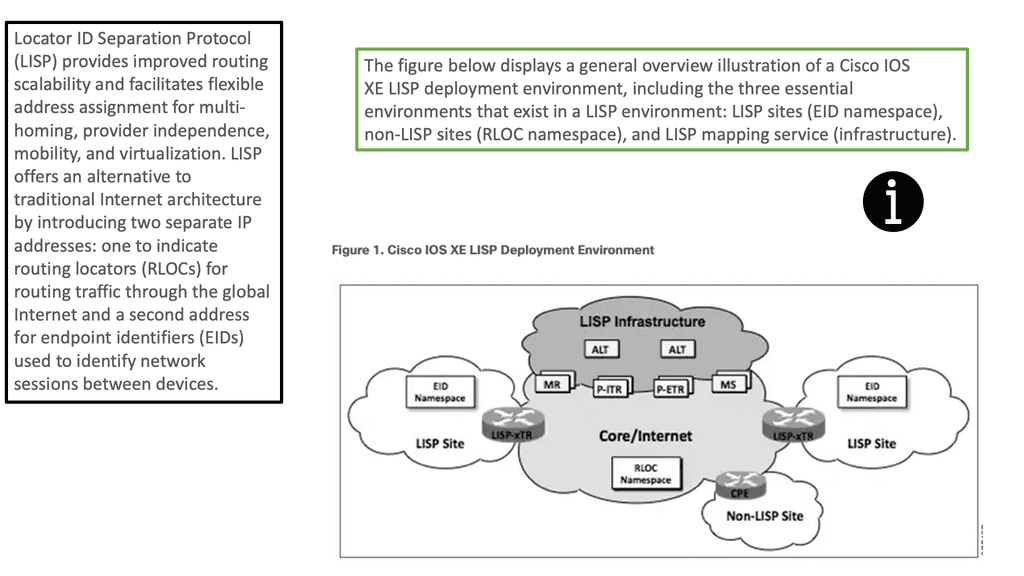
Network Function Virtualization performance
There are three elements relating to performance – management, control, and data plane. Management and control plane performance is not as critical as the data plane. As long as you get decent protocol convergence timers, it should be good enough. But generally speaking, they are not as crucial as data plane forwarding, which is critical for performance.
The performance you get out of the box with an x86 device isn’t outstanding; maybe 1 or 2 GiG of forwarding performance. If you do something simple like switching Layer 2 packets, the performance will increase to 2 or 3 gigs per core. Unfortunately, this is considerably less than what the actual hardware can do. The hardware can push 50 to 100GiG through a mid-range server. Why is out-of-the-box performance so bad?
TCP stack and Linux kernel
The problem lies with the TCP stack and Linux Kernel. The Linux Kernel was never designed for high-speed packet forwarding. It could offer a better data plane but an excellent control plane function. To improve performance, you may need multi-core processing. Sometimes, the forwarding path taken by the virtual switch is so long that it kills performance.
Significantly, when the encapsulation and decapsulation process of tunneling is involved, in the past, when you started to use Open vswitch (OVS) ( what is OVS ) with GRE tunneling – VPNoverview performance fell drastically.
They never had this problem with VLANS because they used a different code path. With the latest version of OVS, performance is not an issue. On the contrary, it’s faster than most of its alternatives, such as the Linux Bridge.
The performance has increased due to the changes in architecture for multithreading, megaflows, and additional classification improvements. It can be optimized further with Intel DPDK. DPDK is a set of enhanced libraries and drivers that enable kernel bypass, gaining impressive performance. Performance may also be achieved by moving the hypervisor out of the picture with SR-IOV.
SR-IOV slices a single physical NIC into multiple virtual NICs, and then you connect the VM to one of the virtual NICs. You are allowing the VM to work with the hardware directly.
Summary: NFV Use Cases
Section 1: NFV in Telecommunications
NFV has significantly impacted the telecommunications industry by enabling service providers to virtualize network functions, such as routing, firewalls, and load balancing. This virtualization allows for increased flexibility, scalability, and cost-effectiveness in managing network infrastructure.
Section 2: NFV in Healthcare
The healthcare sector has seen the integration of NFV to optimize network performance and security. By virtualizing functions like data storage, security protocols, and patient monitoring systems, healthcare providers can streamline operations, improve patient care, and enhance data privacy.
Section 3: NFV in Banking and Finance
In the banking and finance industry, NFV offers many benefits, including enhanced network security, improved transaction speeds, and efficient data management. Virtualizing functions like fraud detection, virtual private networks (VPNs), and disaster recovery systems enable financial institutions to stay competitive in a rapidly evolving digital landscape.
Section 4: NFV in the Internet of Things (IoT)
The proliferation of IoT devices necessitates robust network infrastructure to handle the massive influx of data. NFV optimizes IoT networks by providing virtualized functions like data analytics, security, and edge computing. This enables efficient data processing, reduced latency, and improved scalability in IoT deployments.
- DMVPN - May 20, 2023
- Computer Networking: Building a Strong Foundation for Success - April 7, 2023
- eBOOK – SASE Capabilities - April 6, 2023

